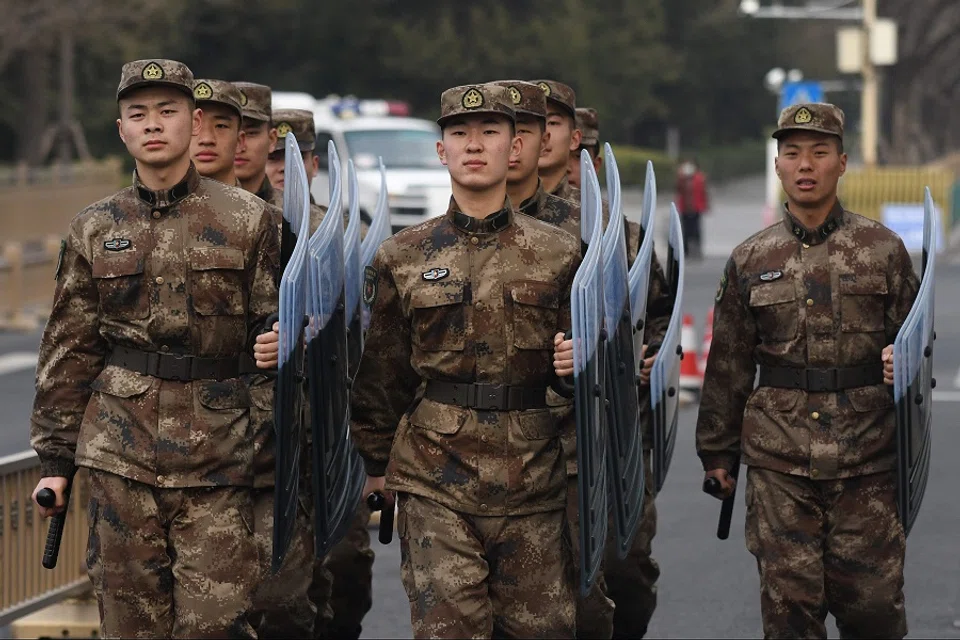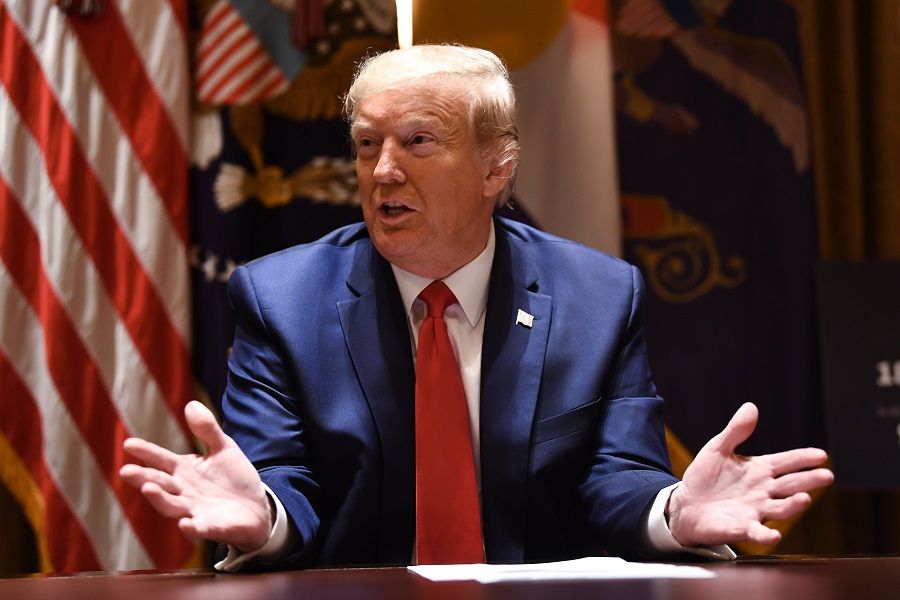Chinese military starts 79-day exercises amid pandemic to deter Taiwan and warn the US

For two and a half months starting today, China's People's Liberation Army (PLA) will carry out military exercises at the Jingtang Harbour district near Tangshan Port.
...the exercises are meant to deter Taiwan separatist activities and to prepare for unification by force when the need arises.
Based on the long duration and large scale of the exercises, involving multiple regiments in inter-war zone amphibious operations and various combat exercises including conquering islands, fending off beach landings, and anti-aircraft and anti-missile defence, academics analyse that the exercises are meant to deter Taiwan separatist activities and to prepare for unification by force when the need arises.
The China Maritime Safety Administration announced on 11 May that military exercises and live shooting drills will be carried out at the Jingtang Harbour district between 14 May and 31 July. All boats, ships, and personnel who are not involved in the exercises are to be evacuated to safe areas. During this period, all other boats and ships are banned from entering the controlled area, which is shaped like a fan and has a radius of 25 kilometres.
Military academic Song Zhongping told Lianhe Zaobao that the timing and duration of the exercise at Bohai Bay is very unusual. Tsai Ing-wen and her government would be sworn into office on 20 May, and to Beijing, Taiwan appears to have ventured further on the road to independence and at a faster pace. It can be inferred that these exercises are conducted to ensure that mainland China has the determination and capability to handle the Taiwan issue by non-peaceful means, should Taiwan overstep mainland China's Anti-Secession Law.
Some academics have also analysed that the goal of this exercise is to tackle the US's possible retaliatory actions against China.

Some academics have also analysed that the goal of this exercise is to tackle the US's possible retaliatory actions against China. With no sign of the coronavirus being contained in the US, it remains a big question if US President Donald Trump would be re-elected during the US presidential elections later this year. Seeing that Trump is famous for his unpredictability and is currently embroiled in an intense "blame game" with China over the coronavirus, there are no guarantees as to what unthinkable actions Trump would take against China if his hopes of a re-election are dashed.
...the PLA intends to conduct a landing exercise in the South China Sea staging the capture of the Taiwan-controlled Dongsha Islands (Pratas Islands) in August.
Chinese navy equipment expert Wang Yunfei believes that the PLA chose Bohai Bay as the venue of this exercise for four reasons. One, the Bohai Bay is an inland sea, which means that reconnaissance is not possible for foreign aircrafts. Two, key drills - mainly anti-aircraft and anti-missile operations - for defending the capital Beijing are possible, ensuring that troops responsible for defending the capital are able to test and enhance their battle strategies under near-perfect combat conditions. Three, drills for almost all types of key missions - including anti-aircraft carrier operations against powerful enemies, air defence operations, electronic information warfare, and anti-secession operations such as air and maritime blockades, fire assaults, beach combats, three-dimensional landing operations, and city port operations - are possible. Four, mobility and security of land, sea, air, and rocket forces are highly convenient.
Taiwan media reported that according to a Kyodo News report published on 12 May, the PLA intends to conduct a landing exercise in the South China Sea staging the capture of the Taiwan-controlled Dongsha Islands (Pratas Islands) in August. This exercise would be carried out by the Southern Theater Command and would involve marines, landing ships, hovercrafts, and helicopters, in a manoeuvre of "unprecedented scale".
Taiwanese academics speculate that the PLA is aiming to open a passage for aircraft carriers into the Pacific Ocean and prepare for the establishment of an air defence identification zone in the South China Sea.

According to the report, the PLA is growing increasingly anxious about the numerous US military operations in the South China Sea, which China calls the "South Sea", and this exercise may worsen the tense relations between China and the US, as well as between China and Taiwan.
...the Taiwan issue is a core interest, while the South China Sea issue is a key interest - both are not to be neglected.
The Taiwan military made an emergency declaration on 12 May that it is capable of keeping the Dongsha Islands safe. Taiwanese academics speculate that the PLA is aiming to open a passage for aircraft carriers into the Pacific Ocean and prepare for the establishment of an air defence identification zone in the South China Sea.
Song told us that to China, the Taiwan issue is a core interest, while the South China Sea issue is a key interest - both are not to be neglected. At the same time, both the Taiwan and South China Sea issues are closely related to each other. With both issues getting increasingly complex, it is likely that mainland China would place them on "a single chessboard" and consider them a national security system project, tackling them as a whole.

The Dongsha Islands is one of four major island groups in the South China Sea. It is approximately 260 kilometers south of Shanwei, Guangdong, and a key strategic location for the Chinese navy to head towards the Pacific Ocean from Hainan via the Bashi Channel. It is currently controlled by the Taiwan military.
Chinese military commentator Gu Huoping published an article on his blog yesterday stating that mainland China's amphibious combat ships and its marine troops have been getting ready for a long time. Should certain separatists insist on their ways, turning the PLA's amphibious operation exercises on Dongsha Islands into actual combat might be a good choice to make.
Related: Arm wrestling in silence: China-US military scorecard under the shadow of the pandemic | Why is Beijing flexing its military muscle over Taiwan airspace amidst the novel coronavirus crisis? | Recent Chinese moves in the Natunas rile Indonesia | The South China Sea: More dangerous and unstable
